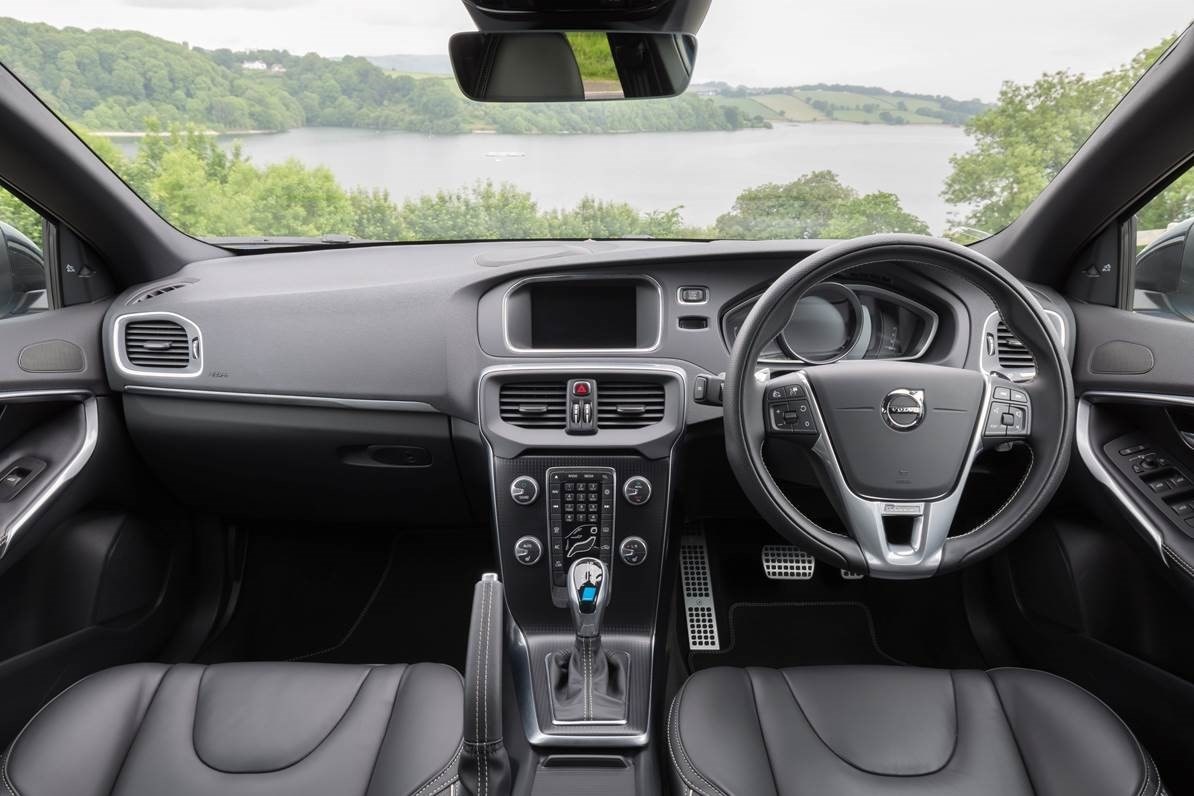Latest model
Volvo updated the V40 and V40 Cross Country in 2016, with the updated hatchback adopting the family face used on the rest of Volvo’s range.
At the front, the new model featured standard-fitLED ‘Thor’s Hammer’ headlights – the same as what’s now fitted to every new Volvo.
More efficient engines also featured, while the trim level structure was updated to be reflective of the rest of Volvo’s other models.
Volvo ‘On Call’ was also introduced to the V40 for the first time, which is a smartphone app that allows remote access for a car’s features – including checking oil and fuel levels as well as a number of other services.
Other small differences included the introduction of new colours, and new interior finishes.
Value for money
As the V40 is pitched as a premium hatchback, its prices are reflective of that. List prices start from £21,410, which puts it roughly on par with both the Audi A3 and BMW 1 Series.
Despite its high list price, standard equipment is impressive, with entry level models coming with climate control, adaptive LED headlights, rear parking sensors and autonomous emergency braking as standard. Cross Country models are more expensive at £25,960, although they sit in a rather unique price point as one of very few off-road inspired hatchbacks.
Used V40s start from under £5,000, which mean you get a lot of car for the money - although admittedly at this price it will be a car with high mileage.
Around £7,000 will get you an entry-level ES spec car with the D2 diesel engine with around 70,000 miles on the clock. We’d recommend spending around £8,000 to get a V40 in either SE Lux or R-Design trim.
There’s some huge savings off the list price on nearly new models, too. We saw a car with just 3,000 miles on the clock for just £15,000 – over £8,000 off its list price in just six months. Cross Country models start from £6,000, with low mileage models coming in at around £8,000.
Looks and image
While the V40 is now getting a bit long in the tooth, it remains a fresh-faced model which is very stylish – more so than many of its important rivals.
The latest model has only built on this, with Volvo’s sharp LED headlights setting off the front end excellently. It’s certainly a car that stands out, with a tinted tailgate and large rear lights.
The interior is not quite as impressive, and it’s starting to show its age now. At the time of the V40’s reveal, it was a fantastic showcase. However, interior design has moved on leaps and bounds since then and despite Volvo’s efforts to update it, it just can’t keep up compare with newer rivals – namely the techy Mercedes A-Class. It still looks classy, but the button-heavy design makes it not as simple to operate as other cars in this class. That said, it feels well-built and sturdy, while the use of Volvo’s on call services gives the V40 a key advantage in this segment.
Where the V40 impresses more is when it comes to the way it drives. The chassis is not the sharpest, but it’s nimble and handles well. But unlike rivals such as the BMW 1 Series, the Volvo V40 is tailored more towards comfort. We have no grumbles about that, as providing you stay away from the R-Design with its big alloy wheels and sportier ride - it’s an exceptionally comfortable car with a supple ride and cushioning seats.





